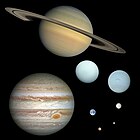User:Interiot/Main
Core topics collaboration The Core Topics Collaboration works to improve essential Wikipedia topics. The current collaboration is Amazon rainforest. The Amazon Rainforest (Brazilian Portuguese: Floresta Amazônica or Amazônia; Spanish: Selva Amazónica or Amazonía) is a moist broadleaf forest in the Amazon Basin of South America. The area, also known as Amazonia, the Amazon jungle or the Amazon Basin, encompasses seven million square kilometers (1.7 billion acres), though the forest itself occupies some 5.5 million square kilometers (1.4 billion acres), located within nine nations: Brazil (with 60 percent of the rainforest), Peru (with 13 percent of the rainforest, second after Brazil), Colombia, Venezuela, Ecuador, Bolivia, Guyana, Suriname, and French Guiana. States or departments in four nations bear the name Amazonas after it. The Amazon represents over half of the planet's remaining rainforests and comprises the largest and most species-rich tract of tropical rainforest in the world. You can help pick the next Core Topic collaboration article. |
| Though this project is inactive, you can help with : Thomas Smolej (random unreferenced BLP of the day for 18 Jun 2024 - provided by User:AnomieBOT/RandomPage via WP:RANDUNREF). |

|
The ongoing maintenance collaboration is the backlog of articles to have bot-modified external links checked. We need your help to completely eliminate this backlog in the coming weeks. |
You can help improve the articles listed below! This list updates frequently, so check back here for more tasks to try. (See Wikipedia:Maintenance or the Task Center for further information.)
Help counter systemic bias by creating new articles on important women.
Help improve popular pages, especially those of low quality.
Today's featured articleA planet is a large, rounded body that is generally required to be in orbit around a star, stellar remnant or brown dwarf. The Solar System has eight (pictured): four terrestrial planets, Mercury, Venus, Earth and Mars; and four giant planets, Jupiter, Saturn, Uranus and Neptune. The term "planet" at first included the Sun, Moon and the five planets visible to the naked eye in the sky; they were seen as having associations with the gods. Copernicus theorized the Earth was a planet and, like the others, orbited the Sun. "Planet" came to include many objects, such as moons, within and beyond the Solar System. The International Astronomical Union in 2006 defined a planet in the Solar System to have cleared its neighborhood of other bodies, and that extrasolar planets should orbit stars and not be large enough to support deuterium fusion. Many planetary scientists, though, still apply the word "planet" more broadly, including dwarf planets, planetary-mass moons, rogue planets and brown dwarfs. (Full article...)
Recently featured:
|
In the news
|



